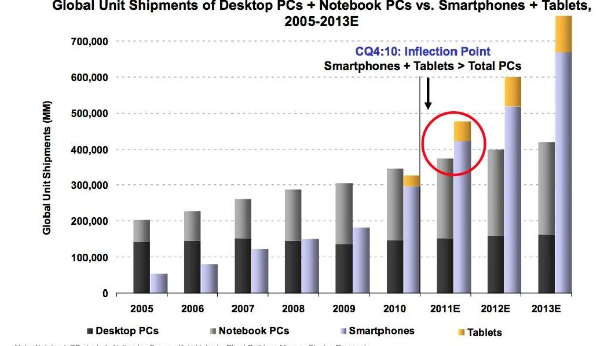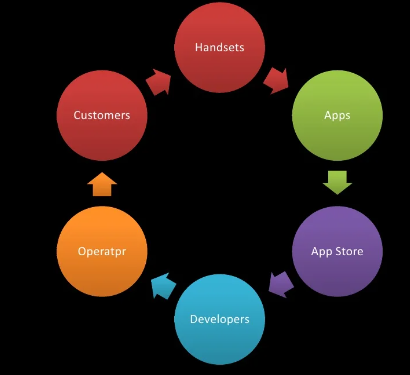Introduction
Disruptive technology is an innovation that significantly alters how consumers, industries, or businesses operate. A recent technology that fits this definition is the smartphone. There are about 3.5 billion smartphone users around the globe (Carvalho et al., 2018). They have completely changed the dynamics of society and how everything operates. Many aspects of the smartphone are disruptive, but the three most prominent factors are the camera. Digital cameras began to overtake film cameras in the late 1990s due to simplicity of use, shareability, limitless picture capacity, and the removal of consumer development expenses. However, in the years that followed, even digital cameras, which can today be considered the industry’s last-ditch effort to stay relevant, had to give way to smartphones. The camera industry has been disrupted due to smartphone technology because of the improved camera experience and the cloud’s capabilities, thus, companies are recommended to adopt measures such as software implementation to avoid being eclipsed.
Smartphone Technology and the Camera Industry
In general, smartphone cameras have undergone discontinuous innovation and evolved dramatically in recent years to the point that many people no longer need to carry or purchase a specialized camera. Discontinuous innovation is a major innovation that creates a new market or significantly transforms an existing one (Dodgson et al., 2008). It is a type of discontinuous change that entails a significant shift in an organization’s business model or offerings. It is an innovation that creates a new market and eventually disrupts an existing market. The growth of smartphone photography has had a disastrous impact on the camera and picture equipment industries. According to Camera & Imaging Products Association (CIPA)research, digital camera sales peaked in 2010 before falling by more than 80% by 2018 (Bourne, 2019). One of the most often mentioned causes of this drop is the disruption produced by smartphone cameras, which significant camera makers first overlooked.

One of the main characteristics of discontinuous innovation is that it is built on new technology platforms that are significantly different from existing ones. This has been the case with smartphones with the recent distributed computing technology. The cloud and the app-based ecosystem that resided there transformed cell phones into more than just restricted memory-holding cameras (Navale & Bourne, 2018). They evolved into small, hand-held production studios where photographs may be cropped, layered, aged, recombined, covered in the text, and entirely changed to meet the mood of the amateur photographer. The app ecosystem debuted at the same time as social networks, which need a steady input of casual images shot anywhere, as shown in figure 2 (Navale & Bourne, 2018). According to Dodgson et al. (2008), discontinuous innovations often lead to new markets or the significant disruption of existing ones. In their capacities as personal communicators, smartphones were welcomed in locations where cameras would appear out of place. With them came the unlimited app ecosystem that could quickly improve those photographs.

Recommendations
Hardware is no longer the primary differentiator between camera makers. Until some completely new technology and innovation emerge (which will most likely happen first with smartphones), they are all competing on about the same level. The game has shifted to software, which will keep a company in business or cause it to fail. Most of the significant developments in smartphone technology have to do with software. According to Bourne (2019), change is both impending and unavoidable, and it is thus critical for businesses to keep up with changing technology developments for three primary reasons: remaining relevant, being competitive, and retaining consumers. Smartphones are outfitted with cutting-edge software advancements such as artificial intelligence, machine learning, augmented reality, picture averaging, and simulated light. In terms of competitiveness, relevance, and client retention, this has been their significant edge over the rest of their competitors. People get thrilled about firmware upgrades, yet camera makers continue to ignore the significance of properly operating software in their cameras. A consumer should not have to buy a whole new camera merely to acquire a new software function; it is ludicrous and should be avoided. Such sales practices sour the relationship between the producer and the client.
Discontinuous innovation can be challenging to achieve since it frequently necessitates the creation of new technological platforms and the acceptance of new methods of doing things. This is what camera manufacturers need to focus and capitalize on to realize their full potential especially when it comes to full-frame sensors. This means abandoning the production of small sensor cameras and focusing on products that the smartphone will never be able to compete with due to its size limitations. The goal is to keep prices as low as possible while focusing on big sensor cameras, excellent optics, and software that may significantly increase image quality. If smartphones completely encroach on the photography business, it will be the end of the industry. As a result, camera makers should concentrate on maintaining themselves separate from smartphones, as competing is pointless – they will always need more resources to do so.
Conclusion
In conclusion, the development of smartphone technology, mainly the camera, has been a blessing and a curse. A blessing in the sense that smartphones have now than ever improved the general user experience while in use. It brings about simplicity and ease of use, and the whole process saves time. Furthermore, these innovations facilitate efficient and convenient data and personal information storage through cloud services. On the other hand, technology has been one of the leading causes of disruption in the camera industry due to the above-stated reasons. This has seen many industry companies struggle and strive to stay afloat in the smartphone industry. It is advised that these companies should rethink their competitive strategies to avoid being eclipsed by smartphones. This may involve adopting new measures like realizing the shift from hardware to software in camera manufacture and cost.
References
Bourne, R. (2019). Is this time different: Schumpeter, the tech giants, and monopoly fatalism?Cato Institute Policy Analysis, (827). Web.
Carvalho, L. F., Sette, C. P., & Ferrari, B. L. (2018). Problematic smartphone use relationship with pathological personality traits: Systematic review and meta-analysis. Cyberpsychology: Journal of Psychosocial Research on Cyberspace, 12(3). Web.
Dodgson, M., Gann, D. M., & Salter, A. (2008). The management of technological innovation: strategy and practice. Oxford University Press on Demand. Web.
Hidalgo, A., & Albors, J. (2008). Innovation management techniques and tools: a review from theory and practice. R&D Management, 38(2), 113-127. Web.
Perez, C. (2010). Technological revolutions and techno-economic paradigms. Cambridge journal of economics, 34(1), 185–202. Web.
Navale, V., & Bourne, P. E. (2018). Cloud computing applications for biomedical science: A perspective. PLoS Computational Biology, 14(6), e1006144. Web.